Fragrant Gladiolus Murielae Abyssinian Bulbs pack of 5
₹175.00
Out of stock
Email when stock available
Fragrant Gladiolus In St. Louis, corms must be lifted in fall each year. Although corms may be left in the ground year-round in USDA Zones 7-10, it is generally believed that plants in these areas will flower best if corms are dug annually there as well. Best grown in humusy, medium moisture, well-drained soils in full sun. Adapts to a wide range of soils except heavy clay. Site plants in locations protected from strong winds. Corms may be started indoors in early spring (for earlier bloom) or planted directly in the ground after last frost date. Corm size determines planting depth and spacing. Plant corms 2-6” deep (2-3” for small corms and 5-6” for large ones) and 4-6” apart. Provide consistent moisture during the growing season, especially during dry summer periods, and do not allow soils to dry out. After bloom reduce watering. After foliage yellows and before first frost, dig up corms, cut off stems and leaves, separate cormels (small corms at the base), dry corms and cormels, discard any diseased or damaged corms and store remaining ones for winter in a dry medium in a cool, frost-free location. If fungal diseases have been a problem, consider dusting corms with a fungicide immediately prior to storage. Corms may also be planted in containers with corms stored for winter in the same manner as if they were planted in the ground.
Noteworthy Characteristics
Fragrant Gladiolus murielae has a large number of common names, including acidanthera, Abyssinian gladiolus, fragrant gladiolus, sword lily and peacock orchid. Synonymous with and formerly called Acidanthera bicolor, with some plants still being sold in commerce today under this name. It is native to mountain areas of East Africa. Sword-shaped medium green leaves (to 2’ long) in upright fans are typical of gladiolus. Fragrant star-shaped white flowers (to 2-3” across) with pointed spreading petals and dark purple throats are less typical of gladiolus. Flowers of this species are well-spaced and have a more graceful appearance than many of the gladiolus hybrids available in commerce. Flowers bloom in 2 to 10-flowered spikes atop scapes rising to 2-3’ tall in late summer to early fall.
Genus name comes from the Latin word for a small sword in allusion to the shape of the leaves. The plants are also sometimes called sword-lilies but people generally use the Latin plural gladioli.
Specific epithet honors Muriel Wilson (1906-1976) daughter of the famous plant explorer E.H. Wilson known as Chinese Wilson who introduced over a thousand plants from China.
Be the first to review “Fragrant Gladiolus Murielae Abyssinian Bulbs pack of 5” Cancel reply
You must be logged in to post a review.



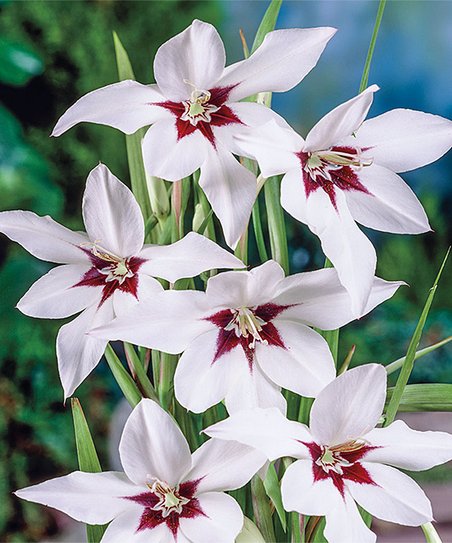
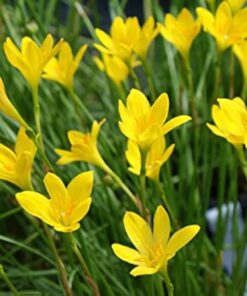

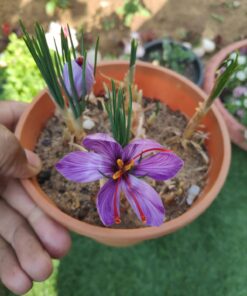


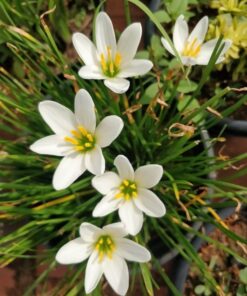

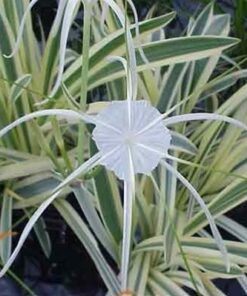
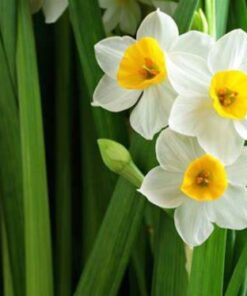
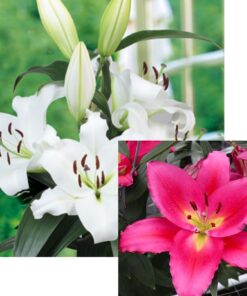

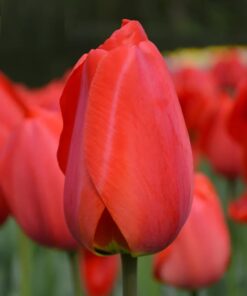
Reviews
There are no reviews yet.